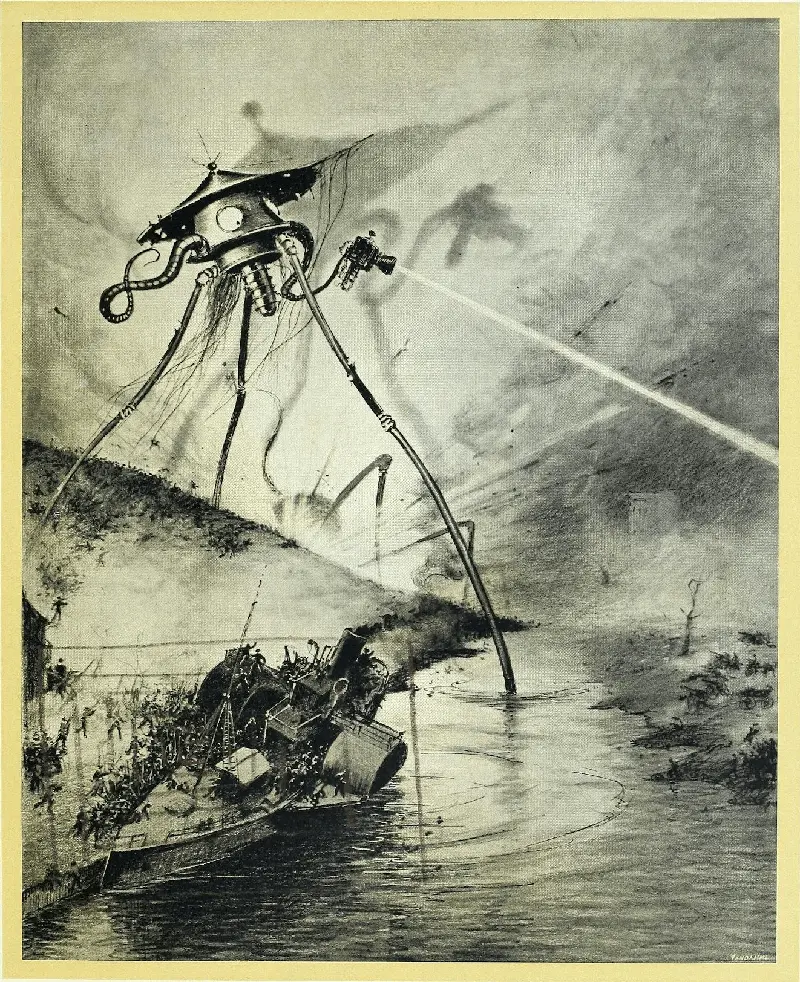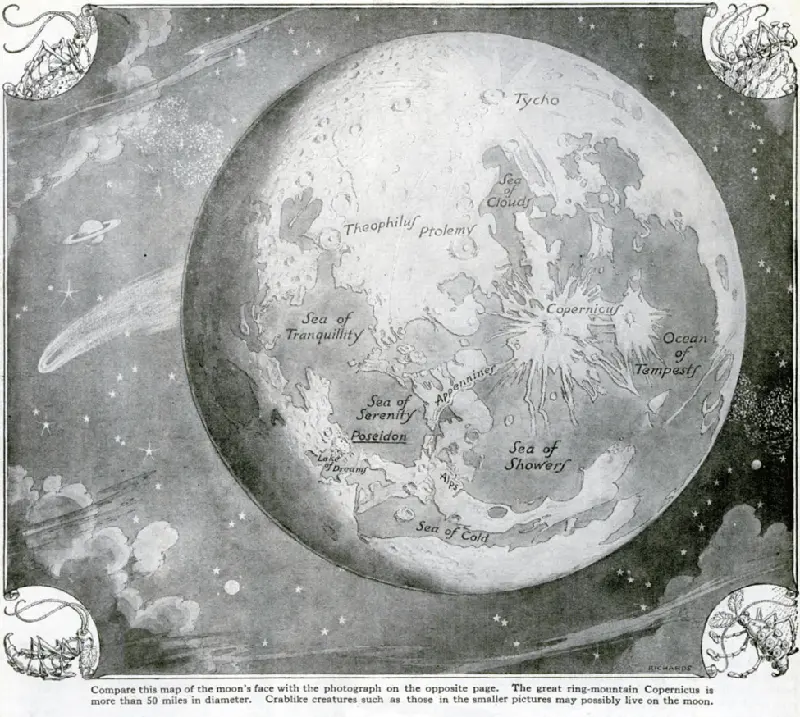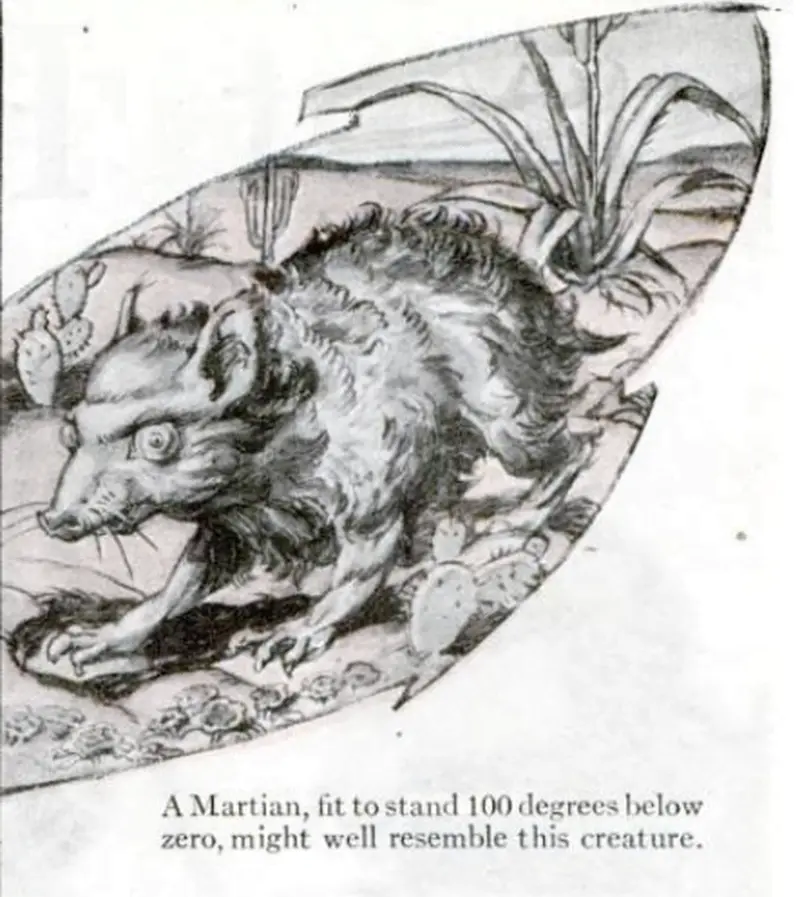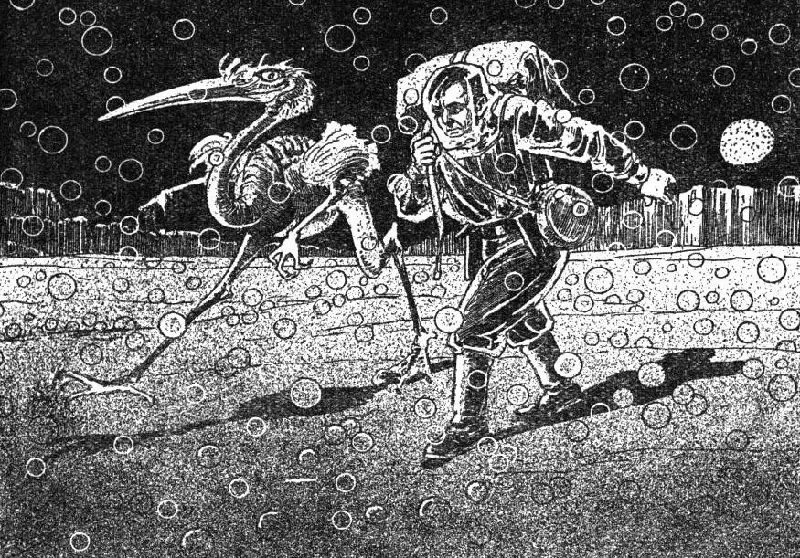The ancient Greek philosopher Democritus, who wrote extensively about space I assumed that there are habitable worlds within it.
And in 1898, the novel Herbert Wells “The War of the Worlds,” which told the story of the Martians’ invasion of Earth, ignited the collective imagination (and fear) regarding dangerous extraterrestrials.
While working on the novel, Wells likely relied on the popular theory of the time that Mars was crisscrossed by canals. This theory arose from the dark lines on the planet’s surface first observed in 1877 by the Italian astronomer Giovanni Schiaparelli. The British astronomer Percival Lowell suggested that the dark lines were actually canals, possibly constructed by an intelligent civilization.

Illustration by Enrique Alvim Correa for the French edition of H.G. Wells’ “The War of the Worlds” from 1906. Martian fighting machine in the Thames Valley.
In 1926, inventor, businessman, and writer Hugo Gernsback founded the first science fiction magazine in America, Amazing Stories. Its pages featured many stories about extraterrestrial life.
In the 1960s, NASA launched the SETI program dedicated to the search for extraterrestrial intelligence. It was canceled in 1993. However, humanity did not stop being interested in aliens, endlessly improvising on this topic. Popular Science .
1929: crustaceans on the Moon
In 1929, the largest telescope in the world, the Hooker Telescope at the Mount Wilson Observatory in California, took stunning photographs of the lunar surface. The images were detailed enough to reveal the topographical features, but not detailed enough to capture any possible forms of life.
It’s no surprise that both scientists and science fiction writers found a great basis for contemplating lunar inhabitants. In 1929, Popular Science author Thomas Alva Edison convincingly argued for the possibility of extraterrestrial life on the Moon. Months in the form of monthly crustaceans with hard outer shells. These protective coverings prevented the leakage of “bodily fluids into the vacuum,” wrote Mr. Elway.

Illustration by Popular Science author Thomas Elvey, 1929.
1930: beavers rule on Mars.
In 1930, the same Thomas Alva Edison suggested that the dominant form of life on Mars There are giant beavers. “Now on Earth, there is one creature for which the imagined Martian conditions would be ideal for its development. This animal is the beaver. It lives either on land or in water. It has a fur coat that protects it from the 100-degree frost of a Martian night,” wrote the science fiction author.
For the sake of fairness, the best photographs of the time depicted the Red Planet as blurred orbs. With only such images at hand, one could freely imagine Martian beavers.

Illustration by Popular Science author Thomas Elvey, 1930.
1934: bird-like creatures – “A Martian Odyssey” by Stanley G. Weinbaum
Originally published in Wonder Stories, Weinbaum’s story, set in the early 21st century, depicted Martians as bird-like creatures.

Illustration for “Martian Odyssey,” 1949.
1950: gray aliens
Probably the most popular version of the appearance of aliens who like to abduct people is the gray little men with tall, humanoid forms, bulging eyes, and large heads. This image of extraterrestrials has proven to be the most enduring. It has traveled for decades from one science fiction work to another. The gray little men have become the stars of “The X-Files,” “Stargate,” and countless other films and TV series.
1968: monoliths – “2001: A Space Odyssey” by Arthur Clarke
The classic science fiction writer Arthur C. Clarke wrote his famous novel in 1968 based on the screenplay of the film of the same name, which he worked on together with director Stanley Kubrick. The novel was published after the release of the film. In “2001: A Space Odyssey,” monoliths appeared—extraordinarily advanced objects created by an alien intelligence.
1979: xenomorphs – “Alien” by Ridley Scott
Extraterrestrial life took a distinct turn towards horror films after the release of Ridley Scott’s 1979 film “Alien.” Artist H.R. Giger created terrifying alien creatures known as xenomorphs for the film. These parasites survived by hunting other species, including humans.
Humanity will likely never tire of proposing new theories about what extraterrestrial beings might look like.
